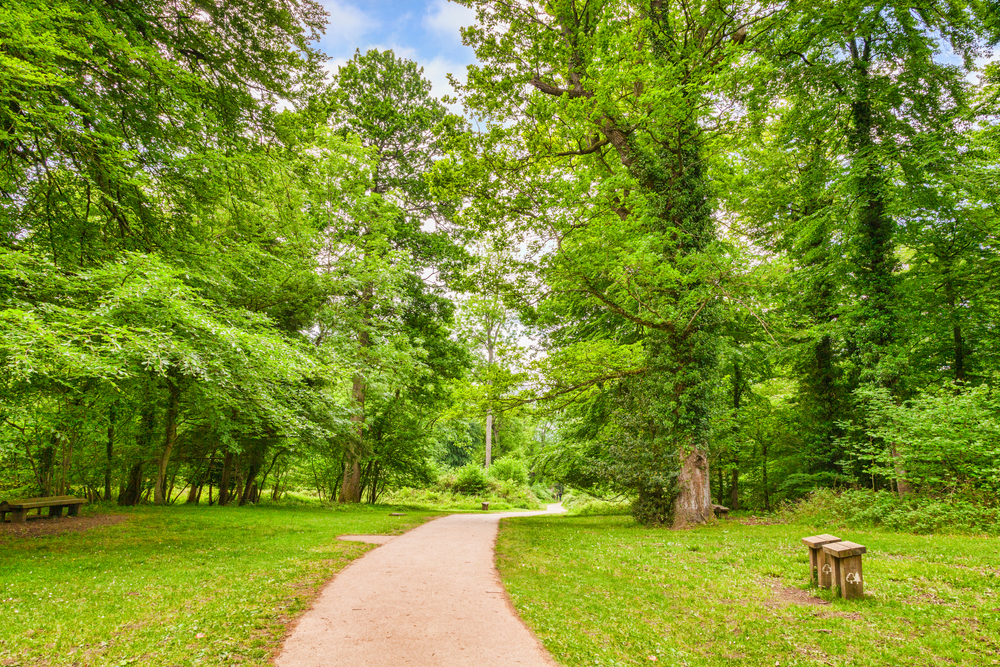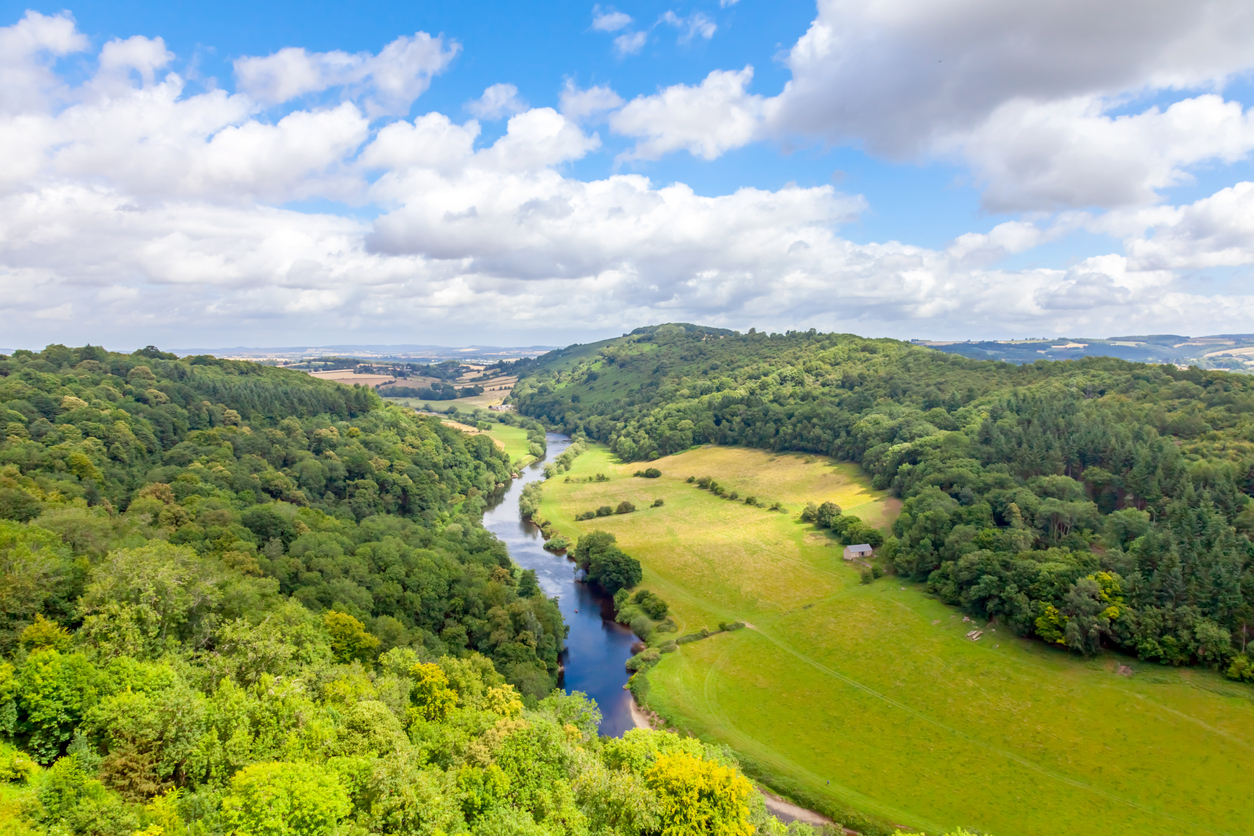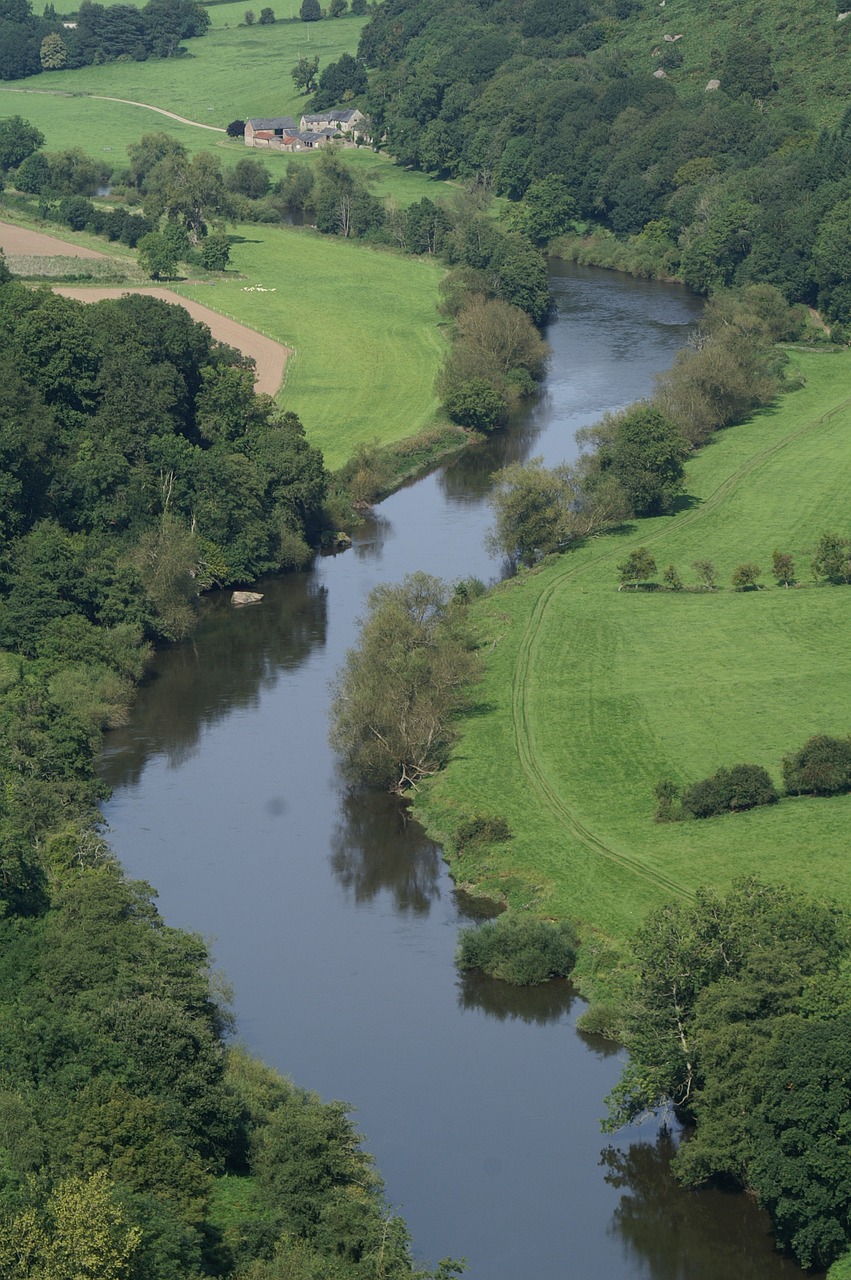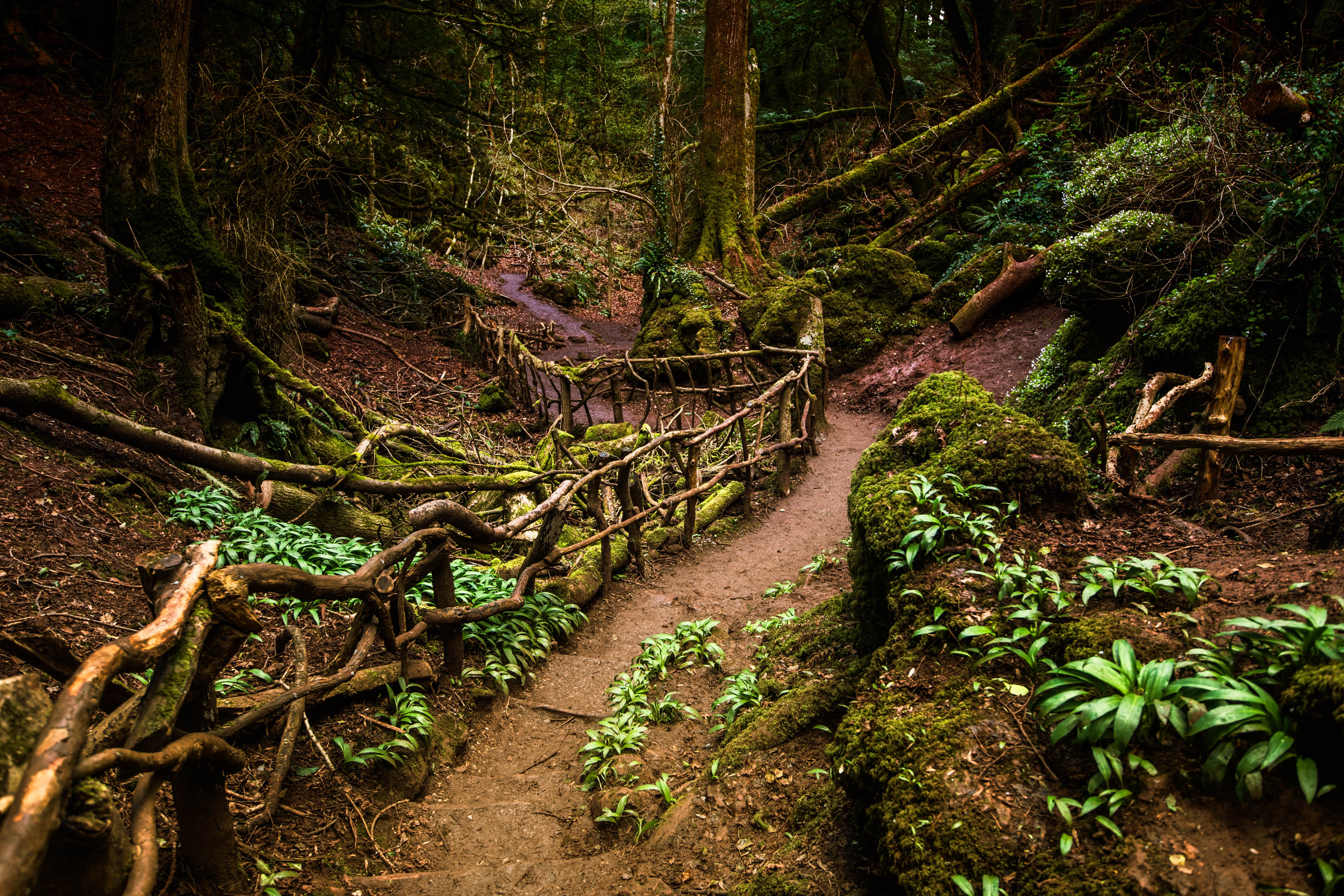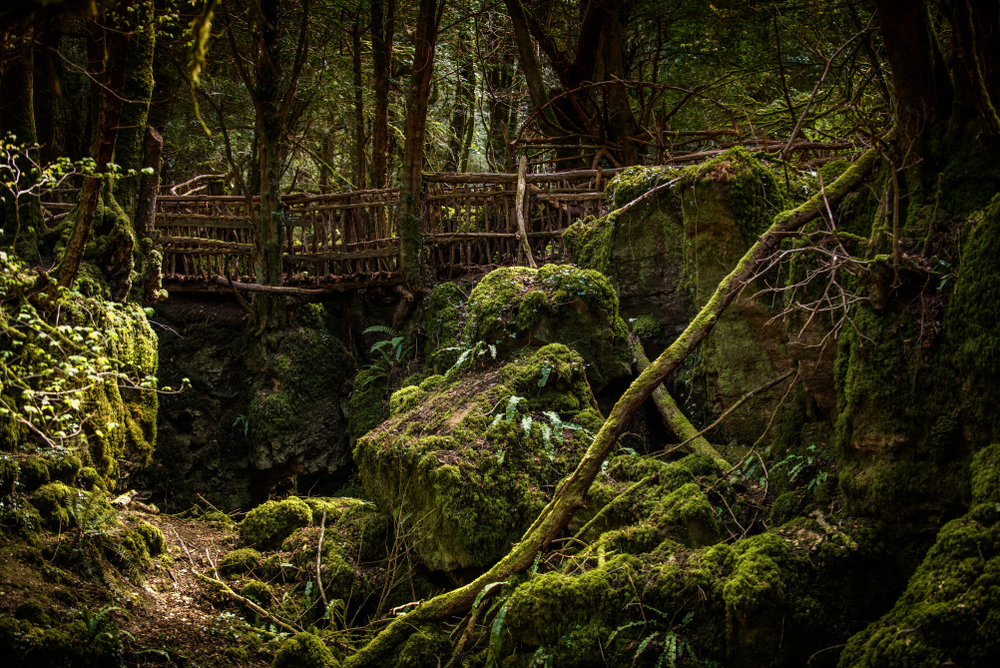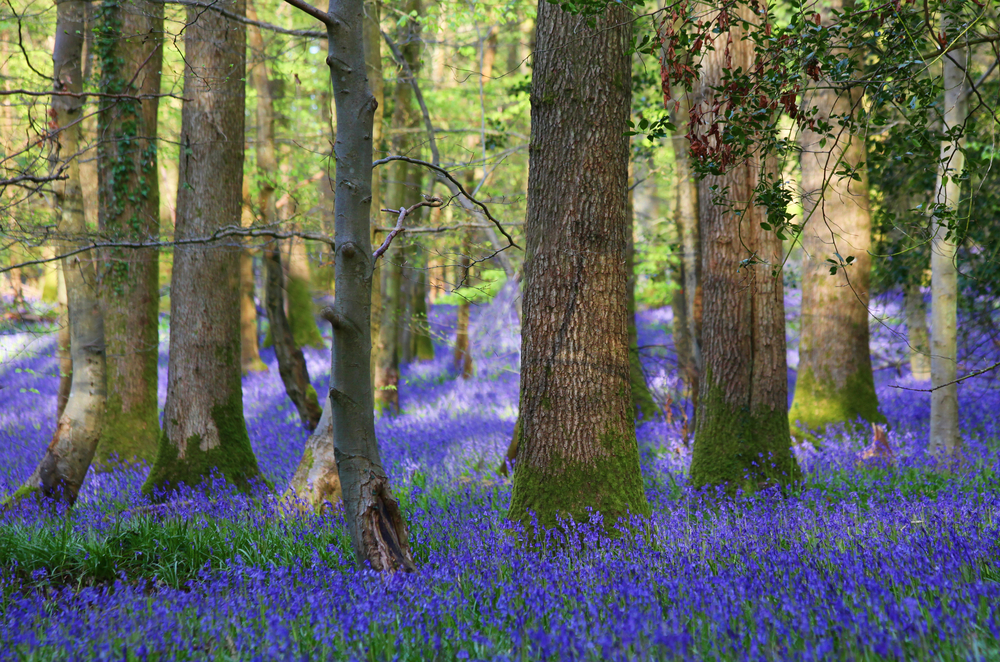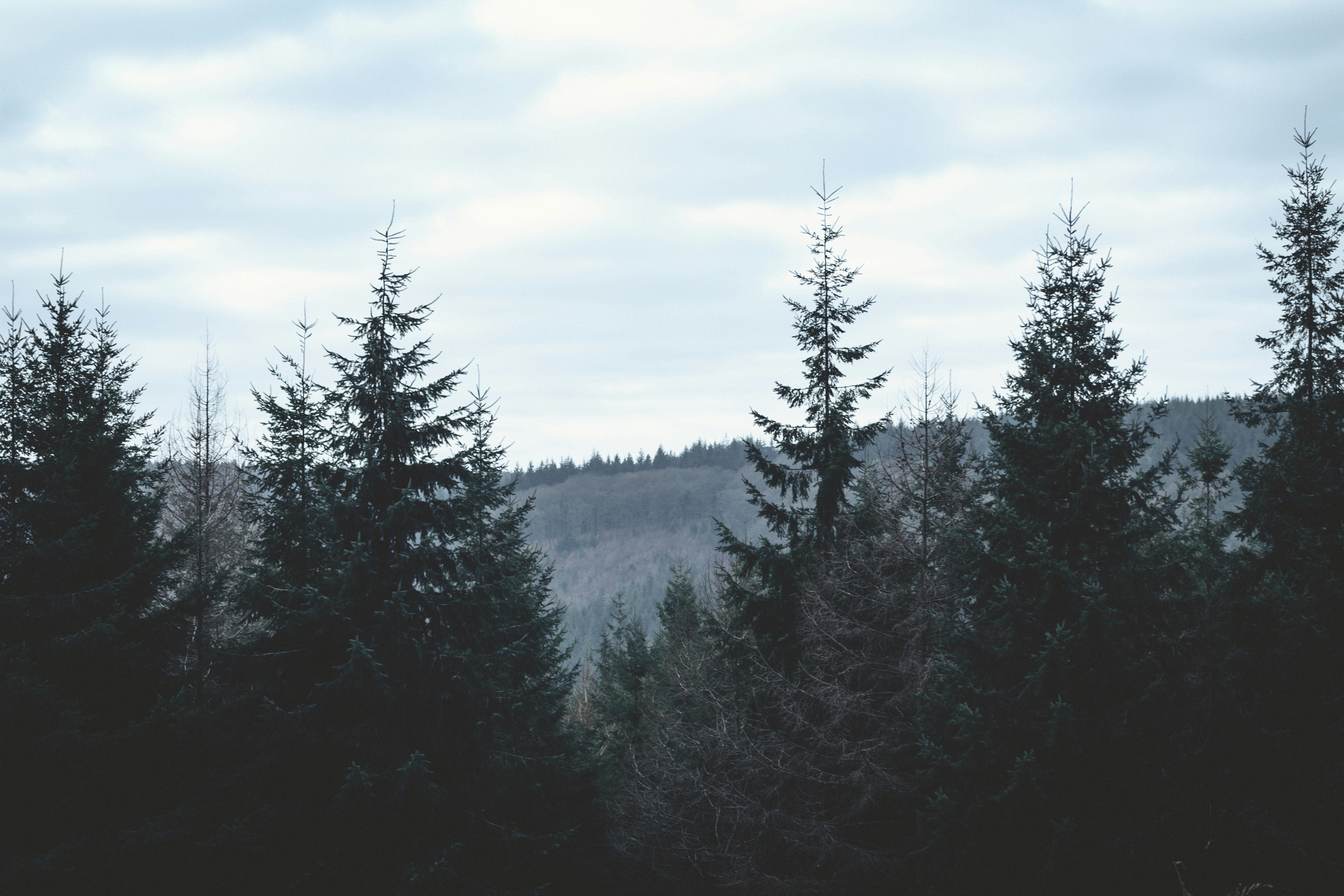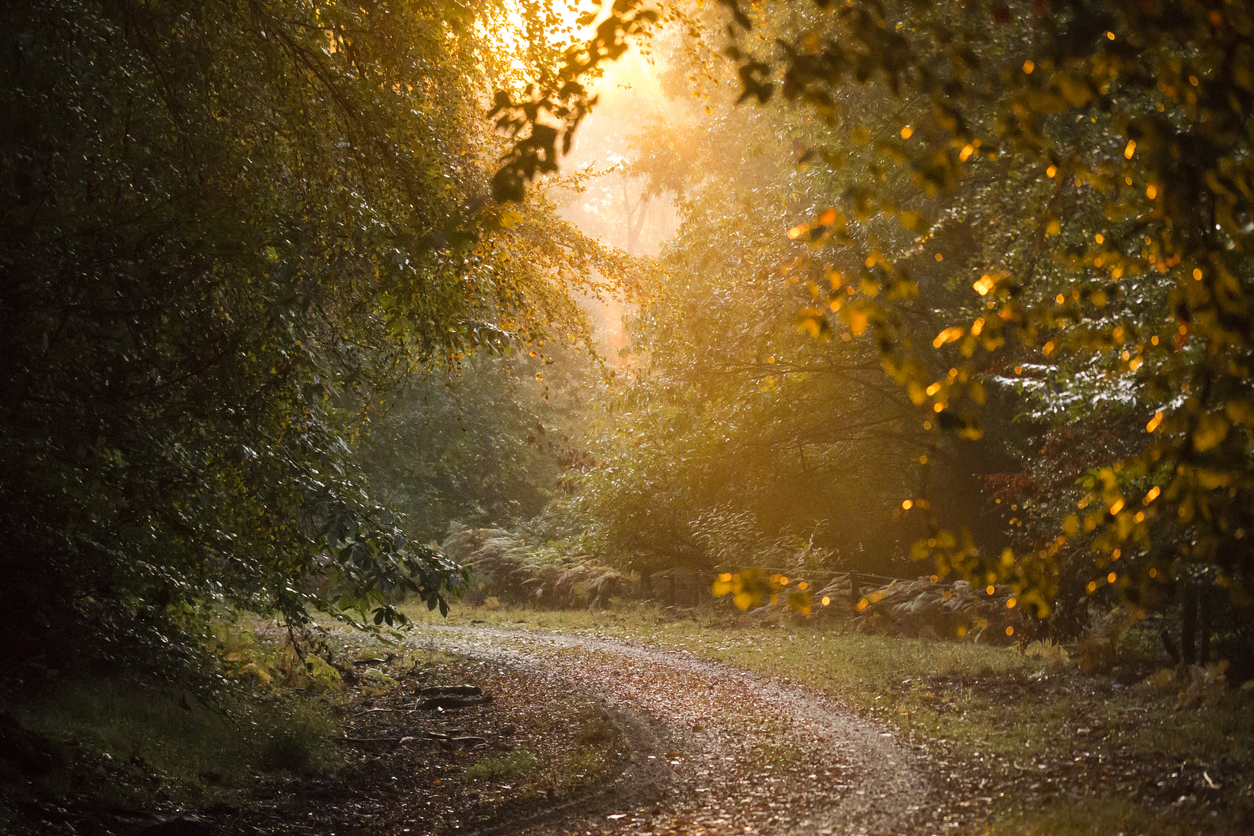The Forest of Dean is a geographical, historical and cultural region in western Gloucestershire, England. It forms a roughly triangular plateau bounded by the River Wye to the west and northwest, Herefordshire to the north, the River Severn to the south, and the City of Gloucester to the east. The area is characterised by more than 110 square kilometres of mixed woodland, one of the surviving ancient woodlands in England. Its mix of pine, oak, beech, sweet chestnut and other deciduous trees make it a diverse and important wildlife habitat. The enormous trees are the legacy of over 4,000 years of management and have enabled the forest to develop exceptional biodiversity. Today, the area is popular for various outdoor pursuits. From family camping trips to activity-packed adventures and tranquil forest walks, the Forest of Dean has something for everyone. Its mix of natural beauty and industrial heritage creates a unique landscape to explore.
Camping and Accommodation Options in the Forest of Dean
The Forest of Dean provides a wide range of camping and accommodation options amongst its picturesque woodland surroundings. From fully equipped lodges and hotels to tent pitching sites, glamping pods and options for wild camping, visitors can choose the experience that best suits their needs and budget.
Campsites and Caravan Parks
For the typical camping experience, the Forest of Dean has over a dozen campsites and caravan parks to pick from. These range from small, tent-only sites to large holiday parks with glamping options and entertainment programmes as well. Most will have toilets, showers and electric hookups with easy access to the forest's walking trails, cycle paths and other area attractions. Some of the most popular sites are Bracelands Campsite, Casnewydd Camping and Caravanning Park, Whitemead Forest Park and Woorgreens Lake.
- Bracelands Campsite → Located in Christchurch, sits alongside the scenic Hudnalls Wood with 19 camping pods available to hire alongside standard touring pitches. Campers can enjoy easy walking access to the villages of Staunton and Hales Wood as well as Offa's Dyke trail and Ruardean Woodside mountain biking centre. Facilities include complete toilet and shower blocks along with electric hook-ups, food prep and laundry areas.
- Casnewydd Camping and Caravanning Park → Occupies a glorious rural setting near Huntley adjacent to the Little Dean Nature Reserve. As well as standard grass and hardstanding pitches for tents and caravans, the site has a range of glamping options including bell tents furnished with beds and decor along with 6 cosy camping pods sleeping 2-4 people.
- Whitemead Forest Park → Less than a mile from Lydney provides the ultimate family-friendly glamping experience combining forest surroundings with premium facilities like an adventure playground, animal petting zone, fishing lake and giant pyramid climbing frame. Special family entertainments run throughout the summer along with a new spa and treatment suite for grown-ups to relax while children have adventures!
- Woorgreens Lake → Lies to the west of the Sculpture Trail nestled within 100 acres of forest and its crystalline lake. Alongside a courtyard cafe and family shop, leisure facilities include a 9-hole golf course plus watersports like windsurfing, kayaking and sailing on the lake with equipment hire and tuition available. Ten hardstanding touring pitches and areas for tent camping complement the day visitor amenities.
Glamping Pods and Lodges
In terms of more unique accommodation options, several camping pods, forest cabins and luxury lodges are now available across the forest area. These timber-built pods often have heating, lighting and beds included, providing a camping experience with a bit more comfort and shelter.
- Bracelands → 19 pods available near Christchurch that can sleep up to 5 and can be combined with electric hook-up tent camping pitches on the same site. Each pod contains a double bed and two singles along with heating, lighting, an outside decking area and shared campsite facilities like dishwashing and laundry. Guests can request barbecues and awnings to enhance their stay. Prices from £50 per night with a minimum 2-night stay in peak seasons.
- Casnewydd Camping and Caravan Park → There are 6 cosy camping pods set slightly apart from the main site. Each 5-metre bell tent-style pod is fully insulated and has carpets along with lighting and heating meaning they can be used year-round. Beds and decor furnishings are provided for a boutique feel. The site offers exclusive use of a shared games room and BBQ hut to accompany the pods. Prices from £55 per night based on up to four guests.
- Pedalabikeaway → 5-star Scandinavian-style lodges featuring underfloor heating, private hot tubs, log burners and smart TVs with WiFi throughout available in the heart Forest of Dean. These 40 square metre designer cabins blur boundaries between indoors and forest through extensive glazing showcasing treescapes wrapping around. Perfect for couples wanting a luxury escape surrounded by nature.
- Whitemead Park → Four forest cabins that offer family-sized accommodation themed by local wildlife. Choose from Tawny Owl, Fox and Mouse designs across two park areas, each with a fully equipped kitchen, bathroom, outdoor space and modern interior styling. Guests have full use of park facilities like adventure playgrounds during their stay. Prices from £99 per cabin midweek.
Wild Camping
Finally, wild camping is permitted across defined parts of the Forest of Dean so long as some basic rules are followed. Campers must not light fires or interfere with plantation work and should camp in small, unobtrusive groups, leaving no trace of their stay. Some of the most popular starting points and areas for wild camping in the forest include Mallards Pike Lake, Sallow Vallets Inclosure (near Parkend) and Woorgreens Lake. However, more remote spots can be found across the open forest areas away from houses and roads if you use the online Forestry England map to identify suitable sites meeting the sustainable wild camping code. When choosing locations, respect the Countryside Code, avoid camping too close to reservoirs or stream banks and try to avoid areas that show signs of excessive wear and tear. Check weather forecasts as exposed hilltops can get very windy. Wild camping means being fully self-sufficient, bringing enough water, food and fuel for cooking. Bury toilet waste far from watercourses or carry-out bags. Take all litter home with you. You’ll need suitable tents, sleeping bags and roll mats along with stoves, torches and backup power banks. Pack essentials like first aid kits and foil blankets. Offline maps help navigate back from remote areas if needed. It is recommended to stick to small groups, spread tents widely across a suitable area and keep noise to a minimum and avoid cutting back vegetation or moving stones unnecessarily when pitching up. Choose durable ground sheets and move tents periodically to reduce landscape impacts over time.
Top Attractions and Things to Do in the Forest of Dean
With over 110 square kilometres of woodland, river and industrial landscape to explore, visitors to the Forest of Dean are spoilt for choice when it comes to days out and things to do. From world-famous puzzle attractions to treetop adventure courses, sculpture trails, cycle paths and family-friendly museums, the Forest of Dean serves up fun and fascination in equal measure.
Puzzlewood
One of the Forest of Dean's star attractions is Puzzlewood near Coleford - a unique 14-acre ancient woodland site with paths winding through moss-covered rocks, weird rock formations, tangled roots and woodland grottos. Its atmospheric setting has led to appearances in shows like Merlin and Dr Who and inspired forest scenes in Harry Potter and Star Wars movies. The pathways through Puzzlewood have been laid out to give families an easy but exciting walk with things to discover around every corner. Children and adults alike will be spellbound by the maze of secret caves, yew trees up to 700 years old and little bridges crossing bubbling streams as they enter a mysterious lost world buried in eerie hollows. Don't miss highlights like Merlin's Cave or the Great Puzzle - a labyrinth of stone passages and hidden valleys stirring the imagination. See if you can find locations featured as alien planets or mystical forests on the silver screen including the exact spot where Luke discovers his frozen pal Han in Star Wars classic The Empire Strikes Back!
Although children can run free and explore, families may still enjoy taking a guided walk (for a modest additional fee) and listening to stories about goblins and wizards as knowledge of the woodland ecology and wildlife is shared. Expect to get lost but don't worry, follow any path and you'll soon find your way out again! Just watch your step on the uneven stairs and winding gravel pathways. Afterwards, be tempted by cake and light bites in the Puzzlewood Cafe or browse souvenirs in the shop. Puzzlewood is very accessible with good paths, loos and baby change but explore assisted mobility options if needing wheelchair access. Opening times are 10 am to 5:30 pm daily. Approximate postcode GL15 4JE or what3words amount.soap.bridge. Adults from £8, kids £5.
Sculpture Trail
The Sculpture Trail is a fantastic way to see the forest while admiring contemporary artwork. Follow the mile-long trail showcasing over 30 designs crafted from materials found in the forest itself including chainsaw sculptures, willow woven tunnels and wooden mineral towers representing the region's mining heritage. The trail guides visitors through the heart of the Cannop Valley, a haven for local wildlife and woodland flowers so remember to bring your camera! Sculptures range from large willow woven gazebos and forest follies to tiny decorative details on the path edge so keep your eyes peeled around every turn. Popular highlights include the giant Hypercosm sculpture constructed from an old oak tree near the start of the walk along with the rustic mining towers referencing the history of coal and iron works across the forest area. The Gruffalo sculptures carved from a fallen tree are always a firm favourite with families traversing the walk through this idyllic valley.
The trail has been carefully curated by the Forest of Dean Sculpture Trust to highlight the natural beauty of the forest itself as much as the diverse cultural pieces exhibited. Craftspeople are refreshed annually through open competitions so there is always something new to charm and amaze those exploring the trail year after year. Allow around 90 minutes to follow the full walking route there and back from the main Cannop Cycle Centre car park. Sensible footwear is recommended as the paths can be uneven and muddy after rain. The trail is accessible for wheelchairs and buggies for a good portion but assistance may be needed across rougher sections towards the far northern end. Facilities at the cycle centre include toilets and a cafe serving light lunches, snacks and beverages. Visitors short on time can access the first few sculptures easily from this activity hub. Download the free Sculpture Trail app or pick up a guide from the shop to enrich your understanding. Getting there: Cannop Cycle Centre postcode GL16 7EL or what3words planet.hikes.oak.
Go Ape Tree Top Adventures
Fancy testing your head for heights flying above the Forest of Dean on zip wires? Then check out Go Ape Tree top adventures! Sites at Mallards Pike and Beechenhurst Lodge offer aerial challenges like crossings, obstacles, swings and breathtaking zip wire runs forest for adults and kids alike. Experiences range from novice to fearless with booking essentials. At Mallards Pike the Tree Top Adventure is tailored for ages 6-12 years and many kids provide their first chance to face exciting forest obstacles while safely harnessed in. They'll enjoy features like scarily wobbly bridges, a Tarzan swing launch and a thrilling zip wire finale as instructors talk them through each challenge. Mini-courses for ages 4+ are also now available. For teenagers seeking serious thrills, the 1km Forrest Jump challenge zip line combined with sky-high crossings and obstacles at Beechenhurst caters for those aged 10+. This takes zip wiring to another level allowing adventurers to soar like birds with panoramic views across the forest waiting as their courageous reward.
All sessions start with full safety briefings from friendly, qualified instructors who make first-timers feel completely comfortable before kitting you out with a harness, helmet and attachments. What looks terrifying soon becomes huge fun gliding effortlessly between the tall trees and lush valleys. Just don't look down! Facilities at both centres include free parking, toilets, payment kiosks and small cafes for pre or post-adventure relaxation. Pre-booking via the Go Ape website is strongly recommended during peak seasons to guarantee a time slot. Places do sell out at weekends. Prices start from £20pp based on group bookings. Approximate locations: Mallards Pike GL14 1EU and Beechenhurst GL14 3LJ.
Weather and Climate in the Forest of Dean
As an area dominated by lush woodland, the weather and climate of the Forest of Dean contribute greatly to its natural charm and popularity as an outdoor destination. Due to its elevated situation and surrounding geography, visitors can experience everything from warm sunny days perfect for walking and cycling through to atmospheric conditions bringing misty autumn mornings or snowy winter scenes across the forest slopes and valleys. In general, the climate of the Forest of Dean is temperate and strongly influenced by the area’s position adjacent to the River Severn basin. Being inland and approximately 100 miles from the west coast means extreme weather events are rare with daily conditions fairly moderate although changeable at times.
Across all four seasons, daily temperatures typically range between freezing and the low 20s Celsius. Summer highs might reach 25 Celsius on the hottest days with winter lows dropping to -5 Celsius or below in prolonged cold snaps. Due to moist air often becoming orographic as it rises over the forest, fog can be an issue, especially in late autumn and early winter. Rainfall across the region is generally high given the wet maritime climate influence Britain experiences overall. On average the area records 35 days of rainfall and totals around 800mm each year. October tends to be the wettest month while spring and early summer are often more settled. However, rainfall patterns are notoriously uneven. The forest’s elevated situation does mean it bears the brunt of incoming weather fronts so visitors should always come prepared!
Winter weather usually brings a scattering of snowfall each year, providing scenic vistas across the forest. Amounts vary significantly though with some years seeing no settled snow at all. 2010 saw over 50cm fall in a single December storm! Ice and frost are common though due to the plummeting temperatures. Spring is a lovely, invigorating time to visit the woods and valleys. Daily temperatures recovering into double digits coupled with blossoming wildflowers and lush new growth make March through May a great season for gentle walking and cycling. Sunshine hours also increase rapidly with rain showers interspersed by warm spells. Visiting in summer means long days to enjoy all the great outdoor attractions on offer. June to August sees average highs of 21 Celsius and low rainfall. However, the forest plateau acts as a natural sun trap so temperatures can still push 30 Celsius on the hottest July or August days. Due to the maritime influence too, thundery breakdowns occur from time to time. Autumn brings a renewed chill to the air but September and October continue to deliver mild, settled spells in amongst heavier rains. The autumnal forest hues of golden brown, ruby red and luminous orange are an incredible sight across the undulating woodlands during this season. Expect misty starts and gloaming finishes to shorten the days.
Local News and Events in the Forest of Dean
There is much more to the Forest of Dean than just its spectacular natural landscape. The local community hosts a wide variety of annual events and seasonal news stories reflecting the area's thriving culture. From music festivals and summer shows to quirky attractions reopening after winter, there's always something new happening in the forest.
Forest Book Festival
One of the most anticipated events is the Forest Book Festival held every June. The week-long celebration of all things literary takes place in venues across the forest, playing host to author talks, creative workshops, children's activities and open mic nights amongst its packed programme. Young children enjoy hands-on workshops like making their comic books whilst bookworm teens get to meet their favourite young adult fiction heroes and heroines up close in intimate author sessions. With creative writing contests, woodland storytelling classes and book-binding workshops, budding authors also find inspiration. The festival hub sits in the Speech House hotel gardens with its timber pavilion auditorium hosting headline author talks which have recently included legends like Louis de Bernieres, Michael Morpurgo and Lauren Child. Comedy novelist Ben Miller appears in June 2023! Most events take place outdoors with the tranquil forest as their backdrop.
Sustainable Food and Drink Festival
Another cultural highlight is the Sustainable Food and Drink Festival returning this May Bank Holiday weekend. Promoting local produce and sustainability, visitors can browse artisan stalls, enjoy cookery demos from leading chefs and sample plenty of food and drink as they soak up the party atmosphere. Live music and family entertainment also feature. The event strives to bring environmental considerations around sourcing and supply into sharper public focus through education and collective action. A passionate volunteer team want to inspire visitors to support local businesses and protect vulnerable habitats. The family-friendly ethos means younger visitors also engage with topics like zero-waste living and organic growing demonstrated via fun hands-on activities. As well as talented street food vendors, the festival showcases producers and suppliers from across the wider Herefordshire, Monmouthshire and Gloucestershire areas. From tempting artisan chocolates to award-winning real ales and ciders, visitors contribute directly to sustainable enterprises as they graze between foot-tapping live music sets on the main stage. Special family events include outdoor theatre productions, wildlife encounters with owls and falcons and creative sessions like natural dye t-shirt printing using foraged forest materials. Cookery demonstrations aim to tempt all ages to experiment with nutritious, ethical meal choices back in their kitchens. The perfect bank holiday family day out with a conscience!
Nozstock Music Festival
For music lovers, a must on the calendar is the Nozstock Festival held on a working farm near Bromyard. This independent event has developed a cult following for its eclectic line-up and intimate, chilled vibe across multiple stages amid a Gloucestershire farm setting. Whatever your musical taste you'll find something to love about Nozstock - last year's event saw indie favourites Bastille and Rag'n'Bone Man headline with DJ sets running into the small hours. Great food and bars, workshops, comedy, and family entertainment all feature too. Festival goers talk of real musical magic in the air! While the vibrant Main Stage tent has a capacity for 5,000 people, the second Garden Stage and more niche venues like the Bandstand create a more intimate performance atmosphere. Comedians, performance poets and emerging artists entertain crowds that could be as little as a few dozen! Yet still, be utterly captivating in the moment. Camping or glamping options allow immersion in the whole Nozstock adventure. With a dedicated Family Campsite and Youth Village too, visitors create summer holiday memories to last a lifetime. The steadfast environmental commitment around travel, waste and procurement makes the festival ethical as well as entertaining too.
Accessibility, Parking and Travel Tips for the Forest of Dean
As highlighted already, the Forest of Dean covers an extensive rural area with visitor attractions and facilities spread out across various towns, villages and woodland sites. This dispersed nature means having your transport is a huge advantage for getting around the area efficiently.
If arriving by car, visitors will find numerous pay-and-display public parking areas serving key forest destinations. These include mutual sites at Cannop Cycle Centre and Beechenhurst Lodge with spaces for 200 cars. Whitemead Forest Park and Mallards Pike also offer parking and easy trail access. Do check facilities carefully when booking accommodation as cottages, lodges and camping sites vary significantly in terms of on-site parking provision. While tents and motorhomes can be easily parked up once pitched, visitors with cars, caravans or camper vans will need to consider parking requirements at or near their bases.
In terms of accessibility, the Forest of Dean contains sites suitable for wheelchair users and those will limited mobility but the natural landscape does pose challenges regarding terrain and transport. Flatter, graded paths serve Sculpture Trail and Lakeside strolls but other walking routes can be steep, uneven and muddy after rain. Key attractions like Perrygrove Railway and Puzzlewood make reasonable accessibility provisions as do Go Ape courses to a lesser degree. However, the rural location means accessing these sites without private transport requires effort. Visitors should research their needs carefully before visiting and plan contingency options for bad weather which can impact forest access significantly.
For public transport, the rail network edges the forest area with passenger services running from Gloucester northwards and eastwards with connecting bus routes penetrating further west. Key stations include Lydney, Chepstow and Gloucester with Newnham serving the Coleford area. However, trains don't extend to the villages south of the forest itself. Stagecoach, Pulhams Coaches and Marchants provide key local bus services crisscrossing the forest area and villages. Useful routes connect Coleford, Cinderford, Lydney and Gloucester although weekend timetables are very limited. Some services allow bike carriage if wanting to cycle just one way.
Related articles

Let us know you agree to cookies
We use marketing, analytical and functional cookies as well as similar technologies to give you the best experience. Third parties, including social media platforms, often place tracking cookies on our site to show you personalised adverts outside of our website.
We store your cookie preferences for two years and you can edit your preferences via ‘manage cookies’ or through the cookie policy at the bottom of every page. For more information, please see our cookie policy.

